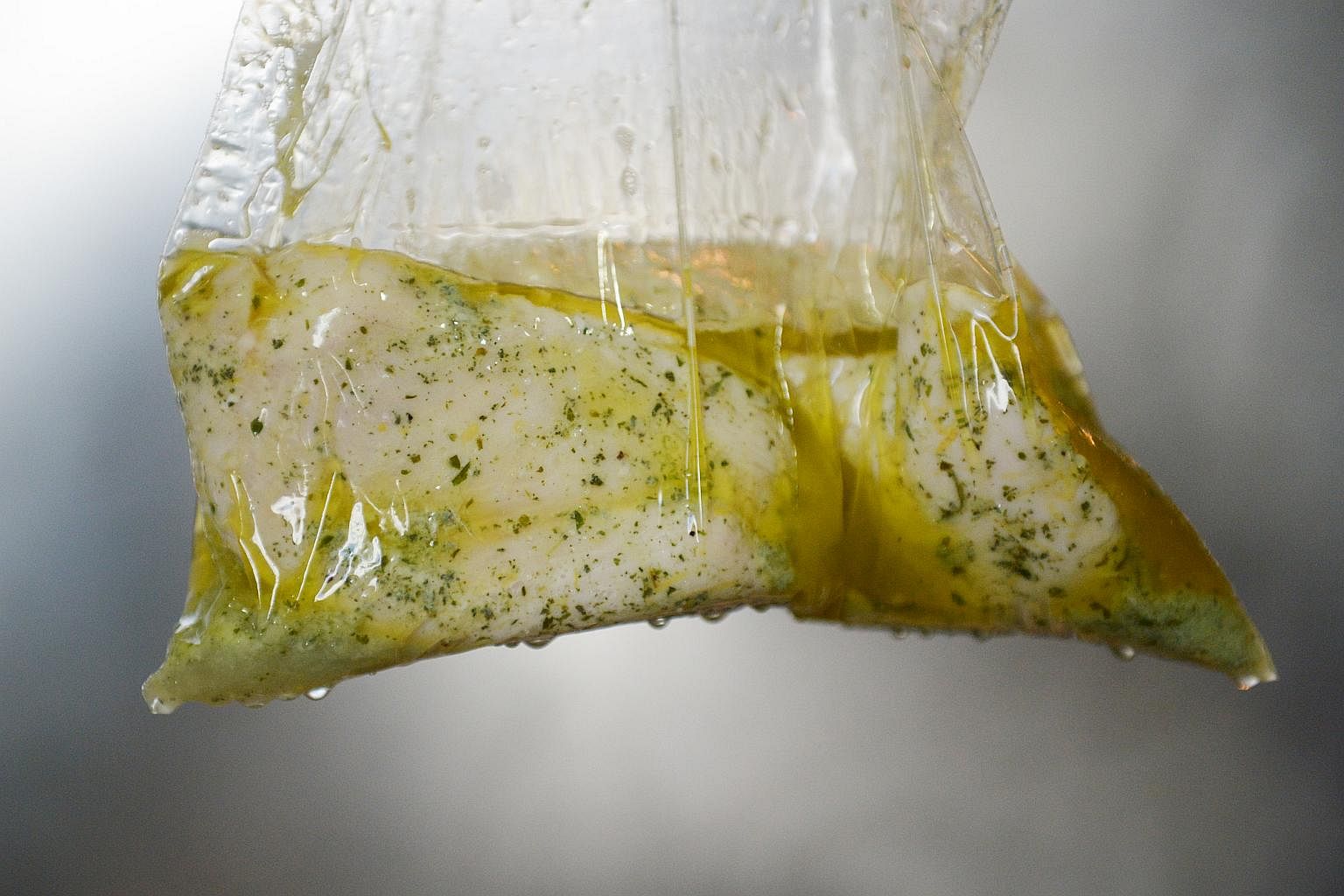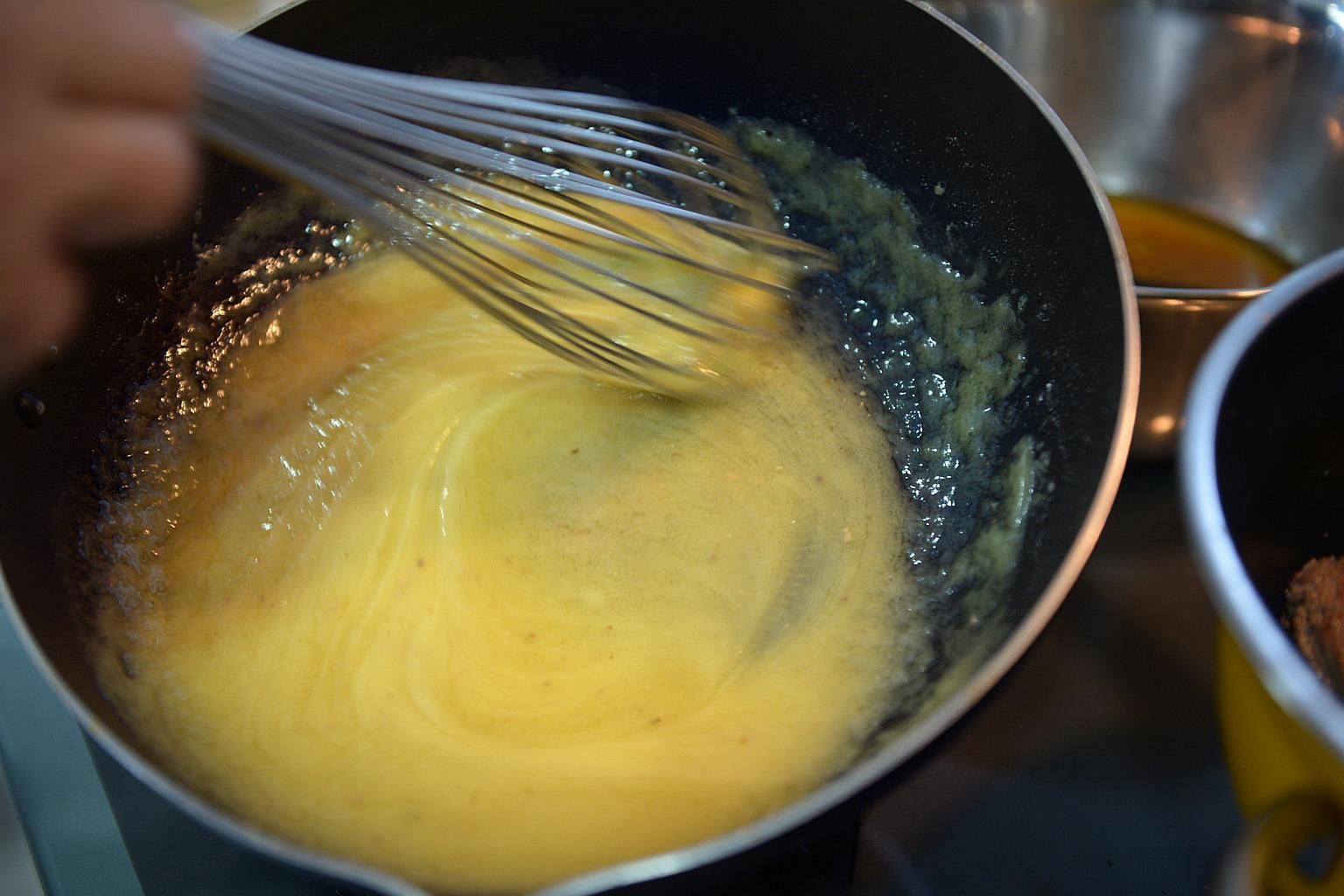The turkey is a physics puzzle in itself, says celebrity chef Ryan Hong.
When you are dealing with this big bird, it is like having two different meats. The leg has connective tissue and fat inside, while the breast has a minimal amount, he explained. "If you cook turkey breast at a high temperature, it will dry out. The lack of fat and connective tissue means there is nothing keeping it moist.
"The leg has more fat so it can't get dry, but it takes longer to cook because the bone absorbs the heat. This protects it from overcooking, but when you cook the leg to perfection, the breast will be overdone," he said.
Due to the turkey's size, even if it is cooked at a high temperature, the internal temperature is much lower, resulting in a pressure difference between the inside and outside of the turkey, causing liquids in the meat to move.
"The higher the temperature, the more moisture seeps out, so the optimum temperature is the one that makes it just cooked - that's just above 75 deg C internally.
"You can monitor when it hits this internal temperature by placing a thermometer in the thickest part of the breast."
Heating the leg at a much higher temperature allows it to crisp and glisten with a hint of caramelisation. This is known as the Maillard reaction, where the amino acids and sugars rearrange themselves, browning and crisping up, creating the sweet roasting as it cooks.
Chef Hong suggests roasting a turkey at 175 deg C, until the breast is just above 75 deg C.
SOLVE IT WITH SCIENCE
An alternative is to cook part of the bird sous vide. The breast can be vacuum-sealed and immersed in a water bath, and cooked at a very precise, consistent temperature.

A home cook can improvise by placing the meat in a heat-resistant ziplock bag, and keeping the water at slightly over 75 deg C, circulating it by stirring every few minutes.
The legs can be roasted normally.
There is also physics at play in the way vegetables become brighter after cooking.
Ms Zhang Yu, a food and beverage technology lecturer at Temasek Polytechnic's School of Applied Science, explained: "When vegetables are blanched or sauteed, heat moves the air bubbles from the plant tissues, permitting greater visibility of underlying pigments, such as chlorophyll in greens and beta-carotene (orange) in carrots."
IT'S DOWN TO THE GRAVY
Gravy is the finishing touch to any successful Christmas dinner, but keeping it lump-free can cause some stress. Chef Hong's solution is emulsification. "This is the process of holding fat in a suspension and it is key here," he said.
This is done by making a roux - a mixture of fats and flour that creates a paste - then adding water on a medium to high heat. Mixing these properly leads to a uniform liquid texture formed by two components that do not bond easily - water and oil.

Once they have been mixed, heat should be removed. "When it begins to set or if it is overcooked, the emulsion will separate, making the oil and water go back to their separate original states," he added.
GENE DETERMINES VEGGIE TASTE
Being able to taste the bitterness of brussels sprouts may be due to a sensitive gene some people have. Researchers have found that people carrying a "sensitive" form of the receptor TAS2R - found on the tongue - are more likely to taste bitter chemicals such as phenylthiocarbamide and similar compounds like glucosinolates.
People with two "sensitive" copies of the gene found glucosinolate-rich vegetables - such as brussels sprouts - 60 per cent more bitter than those with "insensitive" copies of the gene. These receptors can also change over time, which is why children tend to dislike bitter foods more than adults.


